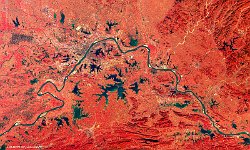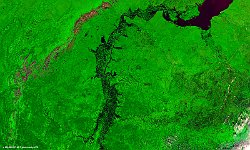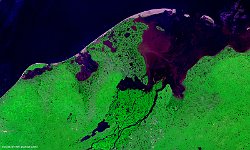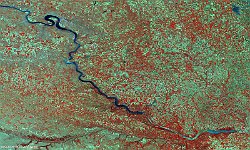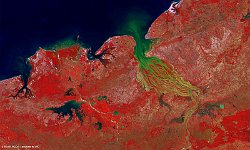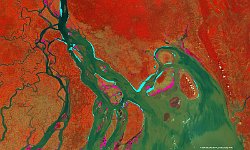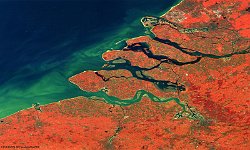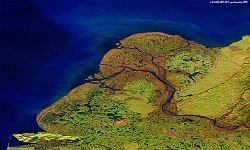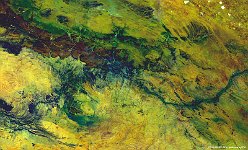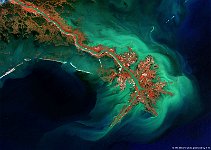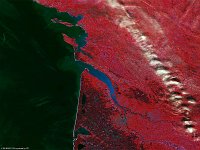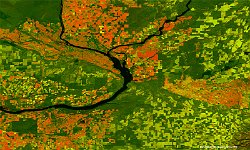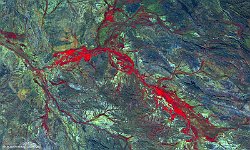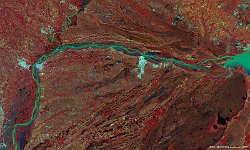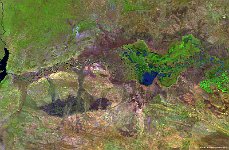16 / 62
Bombetoka Bay, Madagascar
Although PROBA-V was designed as a land surface research mission, several studies have indicated that its high-quality 100 m observations are beneficial for coastal turbidity monitoring.
Within the framework of the Advanced Land, Aerosol, and Coastal Products for PROBA-V (PV-LAC) and PROBA4COAST projects, a new version of iCOR was developed for application to PROBA-V observations and to generate coastal turbidity maps. These maps reveal more detailed spatial patterns of turbid waters at coasts and river estuaries compared to existing turbidity maps from typical Ocean Colour satellites.
R&D professional Water & Coast Els Knaeps explains more on coastal turbidity monitoring and the availability of PROBA-V coastal products in her latest blog
'A vegetation satellite fo coastal turbidity monitoring'.
An example of turbid coastal waters can be seen in the 100 m image of 13 May 2017, which shows the Betsiboka delta in northwestern Madagascar. The river is about 525 km long and its delta is surrounded by mangroves. The greens taints clearly show the turbid waters from the river flowing northwards into Mozambique Channel.
In May 2017, PROBA-V captured this false-colour image of the Betsiboka River Delta in Madagascar. Betsiboka River originates to the east of the capital city of Antananarivo.
Betsiboka is further known as the Red River and owes its distinctive colour to the vast amounts of reddish-orange silt it carries out to sea. These large quantities of river sediments are evidence of large-scale soil erosion that is occurring in the northwestern part of the island in the past 50 years.
Located in the southeast corner of the image, is Ankarafantsika National Park, home to the long-tailed, big-footed mouse, an endangered, nocturnal rodent that is only found in northwest Madagascar. Its patches of dense, dry tropical forest are highlighted in red and inhabited by mouse lemurs (world’s smallest primates) and 129 recorded bird species of which more than half are endemic to the island.
Date: 13/05/2017
Resolution: 100m

